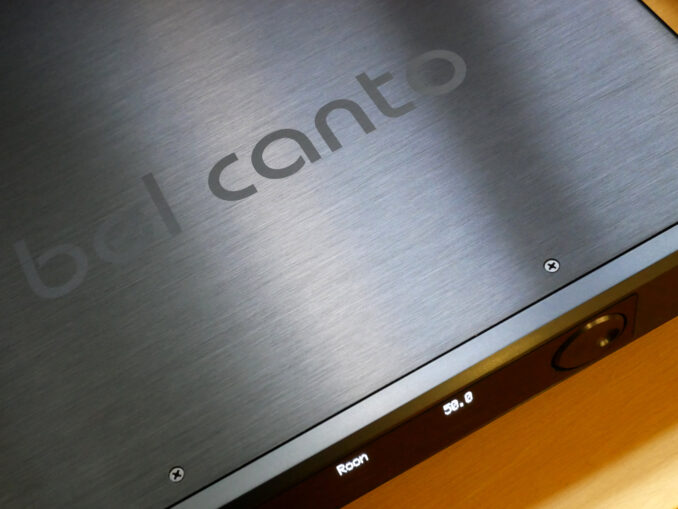
The Bel Canto E1X is what I like to call a full-function integrated amplifier as it includes streaming and phono capabilities along with a host of sophisticated signal processing meant to make our music sound virtually untouched.
But let me digress. Bel Canto was founded in 1991 by John Stronczer and the company’s first product was a single-ended amplifier built around the 845 power triode. Yes, a SET. Hold that thought.
The E1X Integrated Amplifier weighs about 15 lbs. and sits a mere 3.25” high while offering 180 Watts of output power into 8 Ohms and 250 Watts into 4. Based on these specs, we know we’re talking about a switching amplifier, in this case with an output stage built around Hypex’s nCore technology. What may not be as obvious is the switching amplifier in the E1X only receives an analog signal from the output of the in-built DAC, making it an Analog Switching Amplifier.
Some people may find the path from SETs to Switching (amps) a difficult one to follow, but I highly recommend watching this video wherein John Stronczer talks about exactly these things and more:
A favorite quote (spoiler alert): “In a way I think of these nCore devices as the 21st Century 845 triode.”
The E1X inherits its technology from the company’s flagship Black line. This includes the HDR-II (High Dynamic Range) DAC core and the AMiP (Asynchronous Multi Input Platform). In brief, all source inputs — digital (Ethernet, USB, AES, Coax, Toslink), analog, and phono — are processed in the digital domain using 64bit DSP. This includes re-clocking all data using custom Ultra Low Noise master clock circuitry to reduce noise and jitter, and custom digital filters that reportedly offer excellent time domain performance, approaching the impulse response resulting from travel through 10 meters of air. Yes, air is lossy but I don’t recommend getting rid of it for better measured in-room performance (wink).
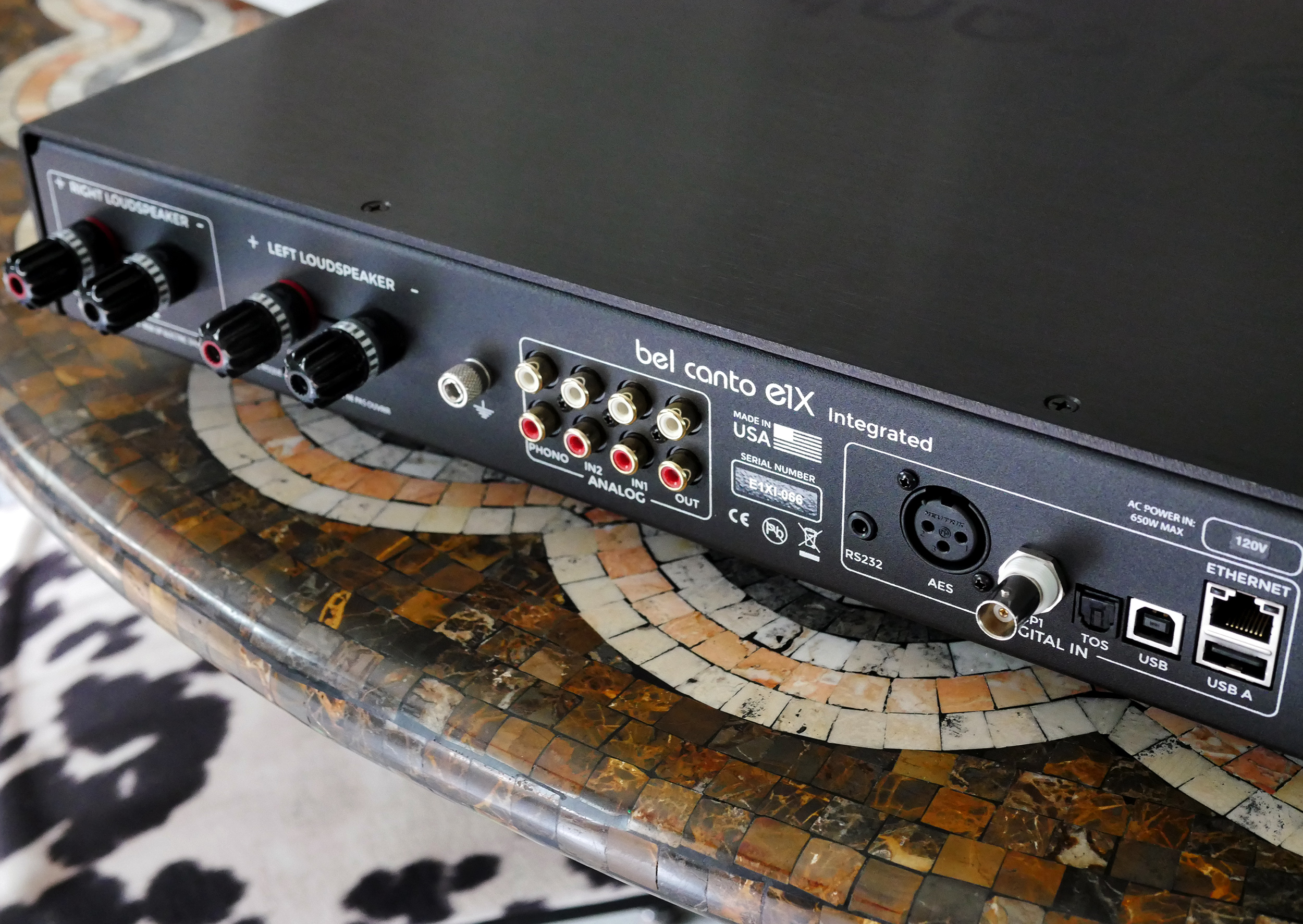
Digging into the inputs, USB can handle PCM resolutions up to 24-bit/192kHz [footnote 1], MQA, and DSD128 (DoP), Ethernet, which is Roon-Ready and DLNA ready, maxes out at 24-bit/192kHz and DSD64 while still supporting MQA, while AES and S/PDIF drop MQA and DSD support. The phono input, which obviously begins as analog also gets converted to digital, offers variable input sensitivity (0.25mV to 5mV) and a number of input impedances to match your MC cartridge (50, 100, 500, 1000 Ohms). The analog inputs gain can be adjusted to match your source, and the line level output can be used with a subwoofer. It’s worth noting that you can also connect the E1X to your WiFi network using the SEEK app and included WiFi dongle. I prefer to go wired.
There’s much more to be said about the technology living inside the Bel Canto E1X and I encourage curious minds to visit the Bel Canto website where you can read about things like — A critical advantage of our HDR-II Core architecture is how the Class A Differential Current Mode output from our DAC operates in concert with our custom balanced analog section to best preserve the original dynamics of the recording — in greater detail.
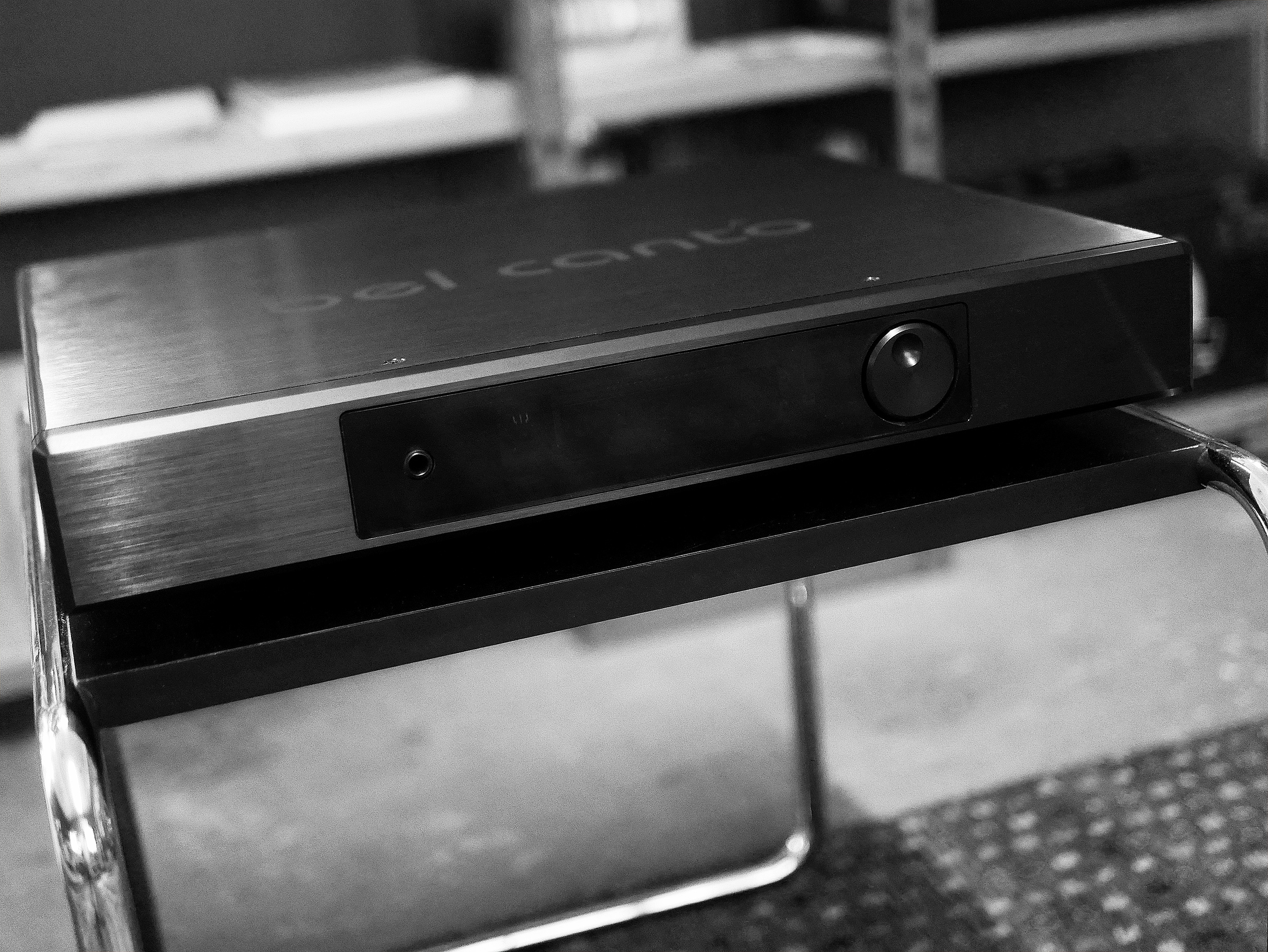
The front panel of the E1X is as minimal as the rest of its outward design, offering a single control wheel, headphone jack, and display. The aluminum wrapped chassis is a stealthy black. In terms of use, I had to get used to the E1X’s feather weight as a slight nudge could send its 15 lbs. sliding on its conical feet but once I did, I very much enjoyed using the control wheel to adjust volume level. So much so, that I got up from the red Eames chair to do so, even though I didn’t have to. If you’re under the age of 60, let me explain — that’s a big deal.
During its stay, the E1X spent driving time mainly with the totaldac d100 and the DeVore Fidelity O/96 speakers. A Rega P3 (2000) fitted with a Nagaoka MP-110 MM cartridge took care of spinning records. I used Roon to control digital playback and its worth noting that you can control the E1X’s volume using the Roon app, the front panel wheel, Bel Canto’s UPnP/DLNA SEEK app for iOS devices, or the included remote.
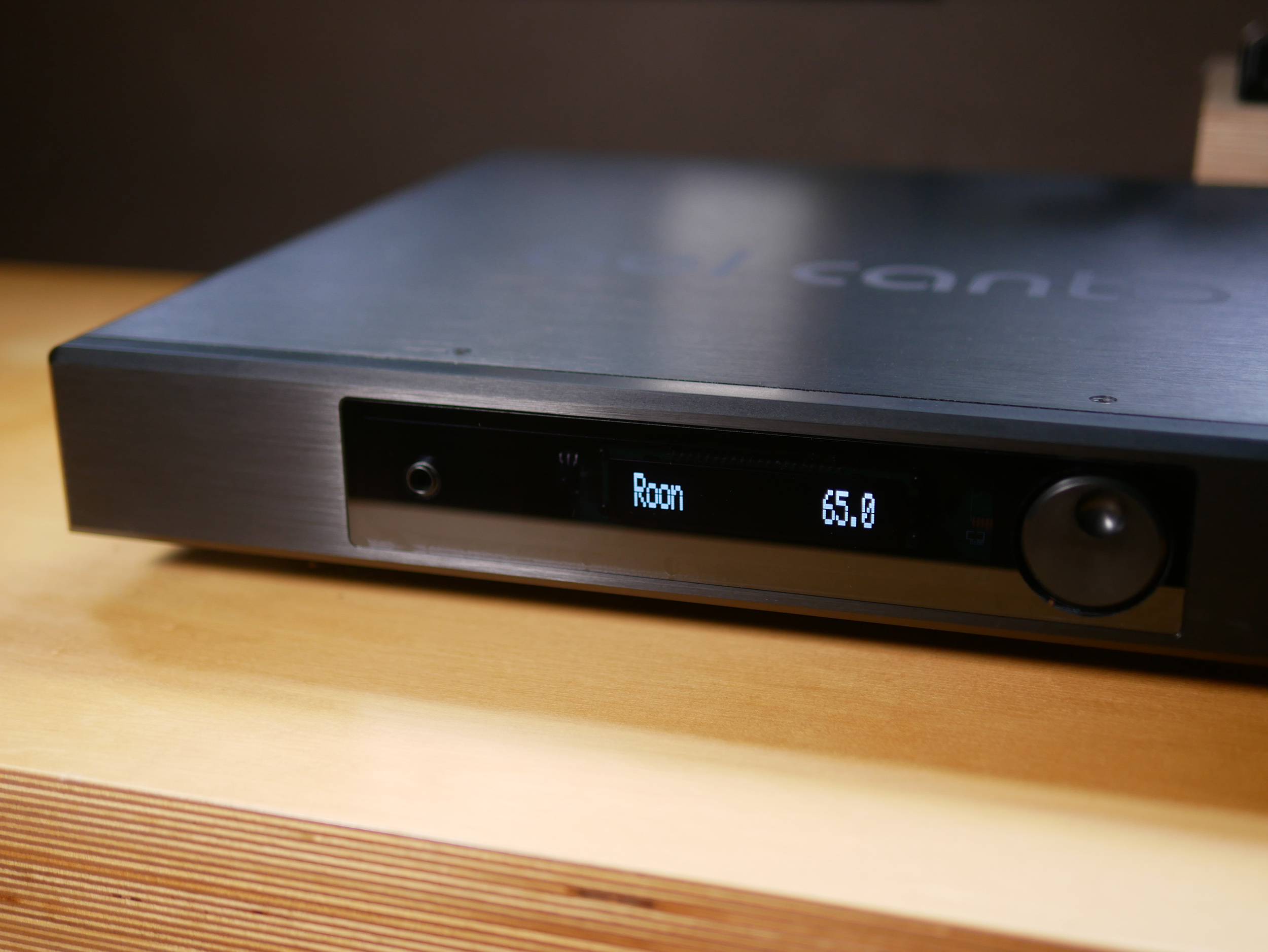
Bel Canto: Beautiful Singing
When I first installed the Bel Canto E1X in my hifi, it was mated with the Sonus Faber Olympica Nova III (review), albeit for a rather brief period of time. My initial impression of the E1X suggested it offered exceptional control from top to bottom, while sounding a bit on the warm side of neutral. The second pairing saw the EgglestonWorks Oso (review) replace the Italians, and those early impressions held fast — supreme control from top to bottom and with Oso, the bottom end was truly impressively full and bountiful, with a similar feel up top, leaning toward a softer sound than the Ayre EX-8 Integrated Hub that seemed to offer more shimmer coming off the upper frequencies.
It’s important to note that these early impressions are just that. In both cases, my focus was on the speaker under review, and how its sound changed with different amplification. I’m also a fan of putting time on review gear before really digging in, so this process serves a few purposes. That being said, the bulk of my time listening to the E1X was spent with the totaldac d100 speakers and even more time with the DeVore O/96, which are my in-house reference of choice. We know each other really well.
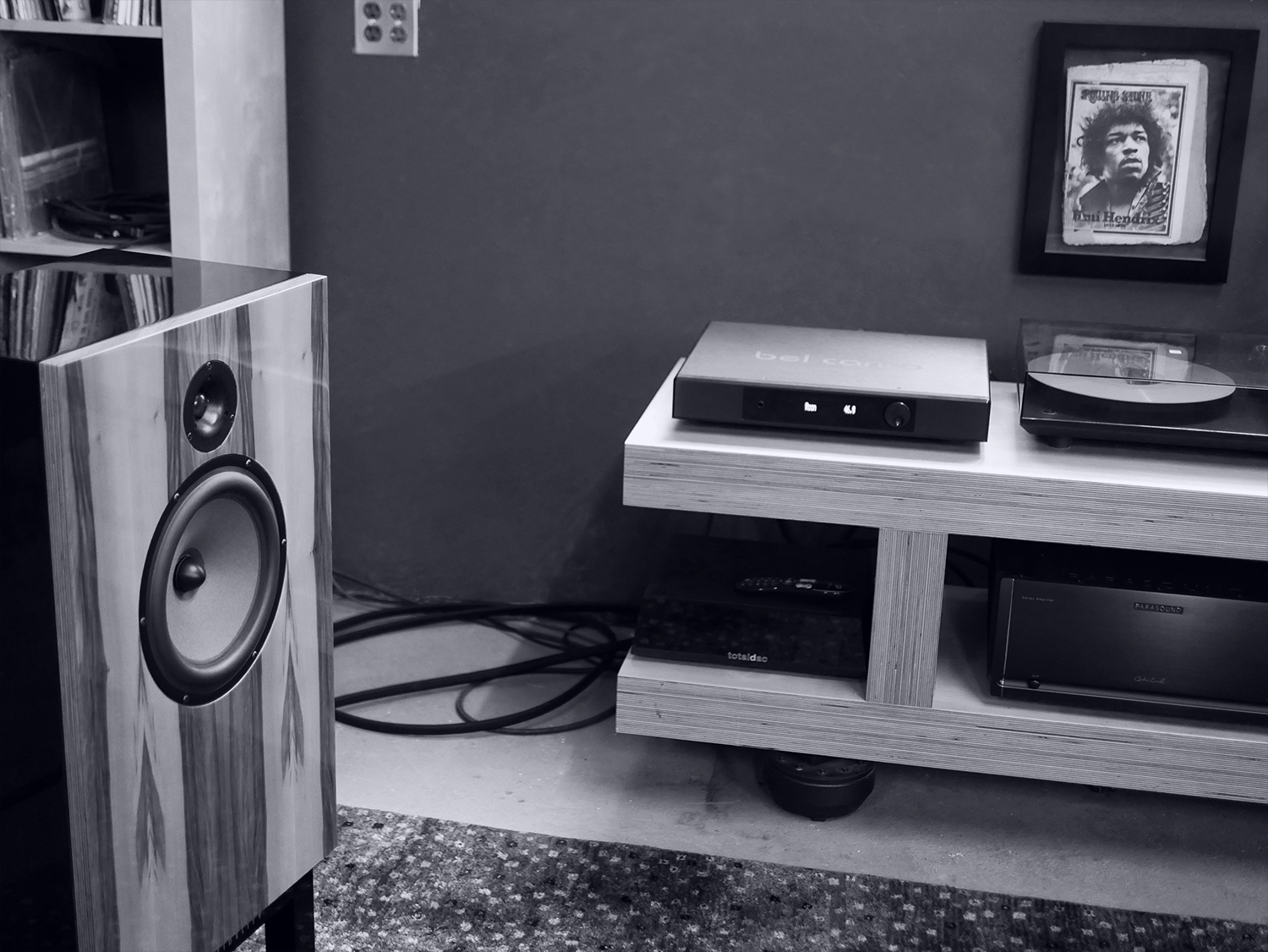
The Bel Canto E1X is strikingly silent. Not sterile mind you, but operationally seemingly silent which makes for striking dynamics. Sounds emerge from total silence with fast-as-music speed, making listening exciting and capable of startling. There is also a very natural sense of presence, which is a result of a number of things including well developed timbral richness, clarity without edginess, with micro and macro musical events sounding fully formed.
I would characterize the E1X as a listen in kind of amplifier because no single sonic trait stands out in an awkward or unnatural way. This may make for somewhat shelved down initial impressions, but longer term listening is rewarded by this even hand. Music can be subtle, and the E1X is completely capable of conveying subtle. Both the totaldac d100 and DeVore O/96 present relatively easy loads for the accompanying amplifier, but they can also highlight sonic irregularities like a magnifying glass and the Bel Canto drove both without a hint of unwanted or unwarranted lumps, bumps, or hardness.
I spent most of my time using Roon as playback controller, making good use of the E1X’s Ethernet input. To mind mind, and for my money, this is the preferred way to roll your serving and streaming needs when investing in a streaming integrated amplifier for its combination of convenience, ease of use, and sound quality. I am continually amazed that a single Ethernet cable can provide access to what is a practically unlimited source of new music, via Tidal and Qobuz, and use both on a daily basis.

That being said, I did test drive Bel Canto’s free SEEK app using my iPhone and found it to be more than serviceable. If you enjoy a relatively simple player interface to your stored music, Tidal, Qobuz, and Internet Radio, SEEK may be what you’re looking for.
For the sake of completeness, I gave the USB output of a Raspberry Pi 4 running RoPieee making it a Roon endpoint a brief spin and I did not notice an appreciable difference, but I would give the sonic edge to Ethernet as it seemed to offer greater resolution. In general, I find the Raspberry Pi to be an OK Roon endpoint in its stock form, so I would say this level of performance speaks well to the USB implementation in the E1X. My conclusion on USB is just take that Ethernet cable that’s connected to a Pi or computer and plug it into the E1X.
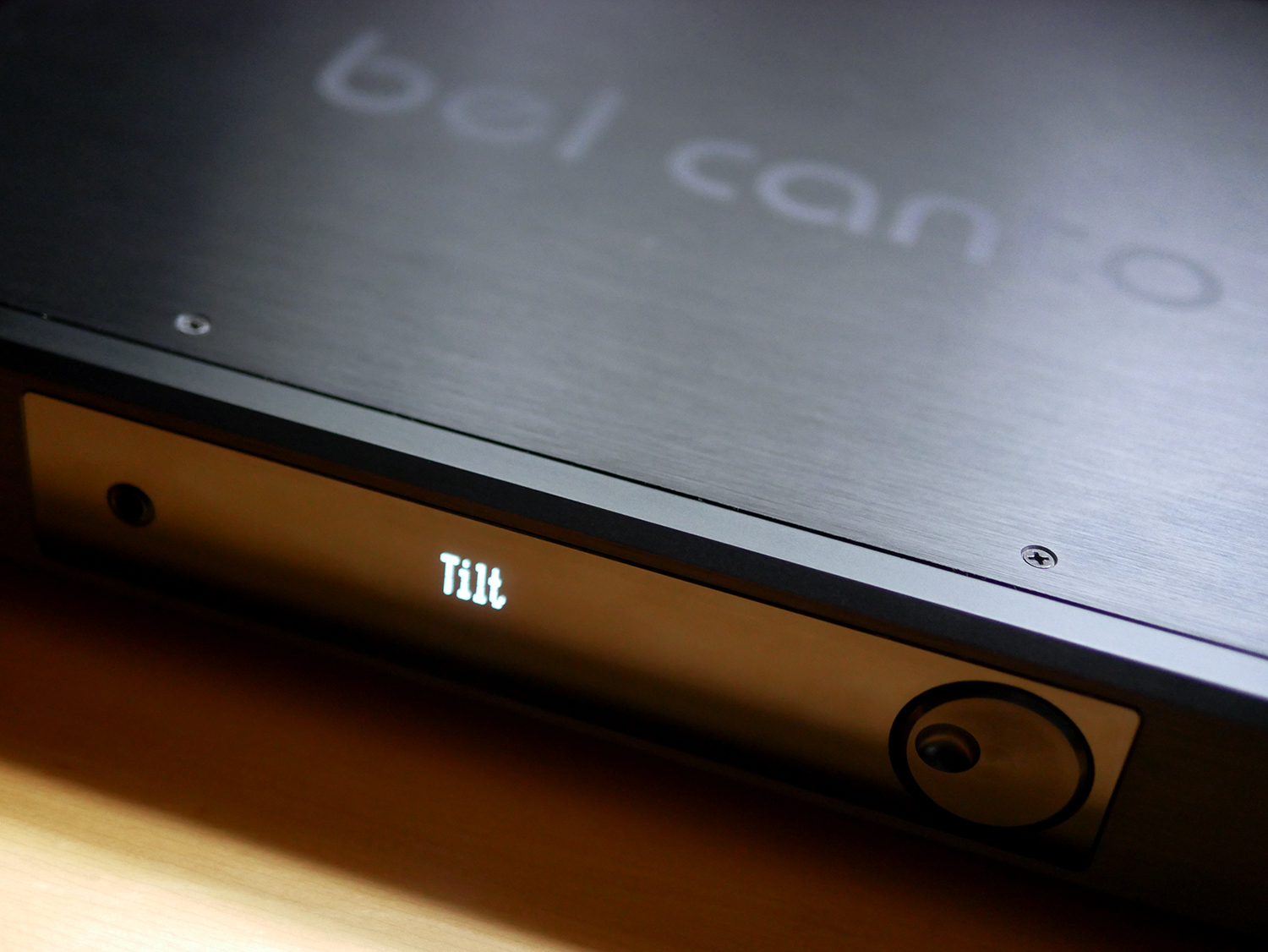
Stepping through the various options using the front panel control wheel was also a breeze, so breezy that I didn’t need to refer to the manual. Push, hold, turn to the option you’re looking for, press, turn to select, press and save. I did not lend the TILT or Bass EQ functions more than a cursory ear as I felt music sounded in perfect balanced straight out of the gate but for people who like a bit of tilt, The Tilt function allows you to trim High frequency and simultaneously boost low frequency equally (or the opposite) to dial in the tonal balance you desire, I did not hear any degradation in sound quality so have at it.
On the phono front, I cracked open my copy of Phoebe Bridgers Copycat Killer EP (on “Mountain Blast” vinyl). This is a strings and things version of four songs from Bridgers wonderful Punisher LP, with orchestration arranged and played by multi-instrumentalist, arranger, producer, conductor, and orchestrator Rob Moose and Gabriel Cabenzas on cello. This dead quiet LP, yes Gracie there is such a thing, sounded dead quiet through the E1X, and those strings and Bridgers vocals were laid out in a convincingly large sound space, sounding all delicate, nuanced, and nice. All of the sonic traits I described with a digital source were present with records, and keeping in mind the E1X’s flexibility and support for MC and MM cartridges, I cannot image anyone wanting for more from their vinyl.

In terms of comparisons, the aforementioned Ayre EX-8 (review) made for the best apples to apples amp on hand. The Ayre has 100 Watts on tap and also offers a streaming option, bringing its price to $7650 or within a few hundred of the E1X. Note that the Ayre does not have a phono option. I’ve been a fan of Ayre amplification for years, having owned and enjoyed their QX-9 integrated. To my ears, the Ayre EX-8, like its sibling, has a wonderful lit up quality in the upper frequencies that makes music feel alive. It is also nicely balanced, offering very good bass control and a rich midrange. By comparison, the Bel Canto sounds quieter, offering greater apparent resolution and more dramatic dynamic range, while the Ayre delivers a more physical presentation with weightier bass response. Taking a step back from music’s inner details, these are both very fine sounding integrated amplifiers and they do not sound remarkably different. More like different spices flavoring a similar dish.
While it left the Barn some time ago, I can say with confidence that the Line Magnetic Audio LM-845iA Integrated Amplifier (review), which uses the 845 triode, does not sound like the Bel Canto E1X. The LM-845iA is just an integrated amp, no streaming, DAC, or phono, and it is a veritable beast of an amplifier, breathing fire into reproduced music with seemingly endless amounts of sheer power. I do not see the Line Magnetic appealing to a potential Bel Canto buyer, but I couldn’t resist the 845 triode tie in.

With the AudioQuest NightOwl headphones around my head, I took a few songs for a ride, and found that the qualities of reproduction I described and ascribed to the E1X’s speaker output also applied to its headphone amp. Detail, delicacy, nuance and control graced my music and me. “Techtonic” from Tirzah’s amazing latest record Colourgrade offers a wonderful mix of sounds and voices which were delivered by the E1X/NightOwl pairing as if there was very little between me and the recording. Nice.
Spending time with more than a few of my favorite test tracks [footnote 1] and the E1X / O/96 combo revealed just how revealing the E1X is, capable of pulling every last ounce of detail and nuance from the recorded event. Whether that be the subtle yet hugely important ghostly backing instruments on Tom Waits’ “I’m Still Here”, the kaleidoscopic funhouse effects on DJ Logic’s “Miles Away”, or every breath A.A. Williams takes on her piano and vocal rendition of Radiohead’s “Creep”, I was treated to the full palette of sounds, moods, and movements of my music.

Bel Canto: Beautiful Sound
The Bel Canto E1X Integrated Amplifier is a subtle but very suitable pleaser – while not flashy or showy, if you enjoy spending time with your music as the sole center of attention, the E1X rewards with music’s riches.
1. The E1X’s USB input originally supported PCM rates up to 384kHz, but a firmware update has capped this to 192kHz. Here’s Bel Canto on the reasons for this change:
The USB input specification is now 24/192 maximum on PCM. This was changed because of performance improvements to the custom digital filter that improved sonic performance for ALL input rates. When we implemented the filters that supported 24/384 we noticed that we lost a musical detail that was present at 24/192 and decided it more important to focus on the musicality then the numbers. With proper set up does not prevent someone from playing 24/384 files.
Bel Canto E1X Integrated Amplifier
Price: $8000
E1X Integrated Specifications
Maximum Data Input Rates:
24bit Data to 192ks/s: AES, SPDIF, TOSLINK
24bit Data to 192ks/s, MQA, and DSD64: 10/100 Ethernet
24bits to 384ks/s, MQA, and DSD64/128 (DoP): USB2 Audio
Low Level Outputs:
Line Level Analog: 4.5Vrms with Bass Management
Headphone: 4.5Vrms maximum, 32ohm minimum load
MM/MC Input:
Input Sensitivity: MM: 2.5mV to 5mV; MC: 0.25mV to 0.5mV
Input Load: MM: 47K ohms; MC: 50, 100, 500, 1000
RIAA Accuracy: +/- 0.25dB, 50Hz-15kHz
THD+N: <0.01% 1kHz A-Weighted SNR: >70dB A-Weighted
Line Inputs:
Maximum Input: 2.2 Vrms RCA
Input Impedance: 10k ohms RCA
THD+N: 0.003%, 1kHz
Dynamic Range: 110dB, A-weighted 20Hz-20kHz
Loudspeaker Output:
Maximum Power Output: 250W-4ohm, 180W-8ohm
Minimum Load: 2 ohms
Peak Output Current: 18 amperes
Frequency Response: -3 dB 0.5Hz-50kHz, all loads
Output connections: 2-pair WBT Nextgen binding posts
Performance:
Dynamic Range: 125dB A-weighted
THD+N: <0.001% 1W, 1kHz, 4 ohms
IMD (CCIF): <0.001%, 1W, 18.5:19.5kHz 1:1, 4 ohms
General:
Power Usage On: 40W
Power Usage Off: 0W
Internally Set Operating Voltages: 100-120VAC, 220-240VAC 50/60 Hz
Dimensions: 17.75 W x 15.75 D x 3.25 H inches, 451 x 400 x 83 mm
Weight: 15lbs (6.8 kg)
Company Website: Bel Canto
1. Patron’s of TM are treated to a monthly list of my favorite test tracks. And more.

